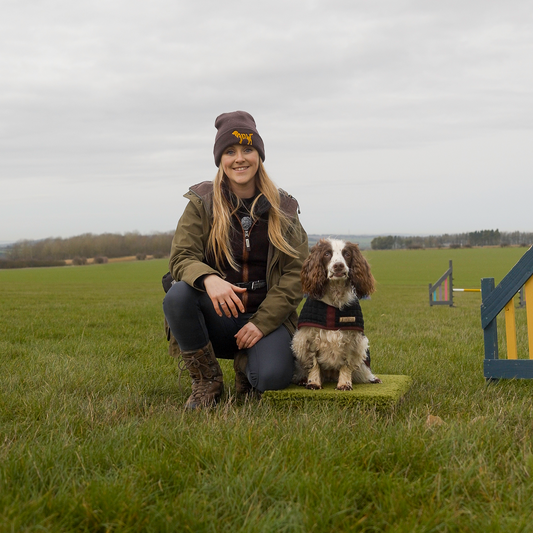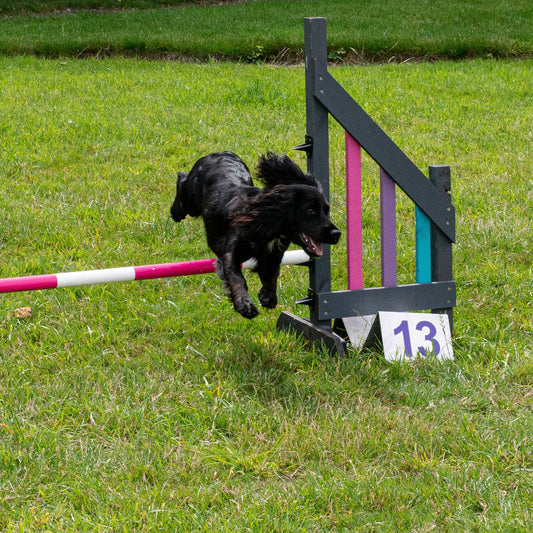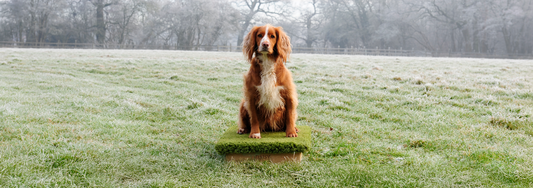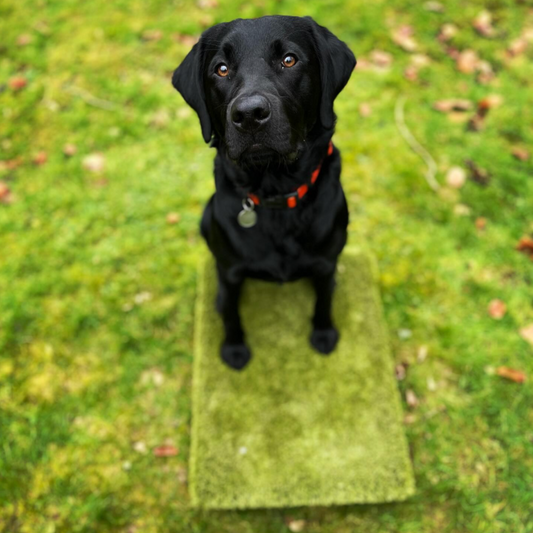Transferring a cue simply means teaching your dog to respond the same way to a new cue (folding your arms to ask your dog to lay down) as they did the existing cue e.g. by saying “down”.
I really like this using this to train dogs to settle in social situations silently, only using hand signals and found I naturally crossed my arms when I stopped for a chat on a walk, so felt natural to integrate.
Conventionally, the method for training an ‘off switch’ is teaching that when you step on your dog’s lead, that a cue that no training is happening and it’s time to settle & praise any signs of settling by saying "gooood" and stroke.
Without a prompt, many of the hunting and herding breeds in my community aren’t wired to relax, instead are looking for something to do so wouldn’t offer signs of settling!
Training your dog on what to do by asking them to lay down gives you a valuable chance to reward and rehearse the settled behaviours you want more of.
How to do this:
Here’s how I train dogs to recognise a new visual cue (folding your arms) to mean the same as a verbal cue they already knew (“down”) to teach them silently to settle when out and then progressively expand on that behaviour.
The steps for this method always are:
- Old cue then new cue
- New Cue then old cue
- New Cue only
So, here’s how that would look in teaching your dog that folded arms means time to settle
- Say down, then fold your arms, and reward when they respond by saying good and feeding them one piece of food to their mouth and one thrown out to release x 5 (These reps means your dog starts to anticipate a down is coming)
- Fold your arms then say down x 5, reward as before
- Just fold your arms and jackpot a correct response by string-feeding with lots of verbal praise.
Case study: how it worked for Ralph
“Ralphie, our Collie x Aussie (because we wanted double the energy) has always struggled with settling and staying still in one place. We've used the usual vocal commands and luring with a treat but he's a smart boy and this soon just turned into a trick. A breakthrough was recently made with the help of Emma teaching us a new visual command using body language and a crossed-arms position. Ralphie quickly learnt what crossed arms meant and this is helping us to build duration in his settle and is giving him a clear signal of what is expected. Recently Ralphie and I waited by the shops and as soon as I crossed my arms he laid down, occasionally and intermittently being rewarded by a treat. He even managed to stay laid down for a few minutes here and there on his blanket at his first group agility class. For a dog who prefers to 'borrow' the equipment and do zoomies around the field with it this is a major breakthrough!”

How does this transition to a calm dog at a pub?
- Practice it in as many places as you can
- Increase the interval of time between your dog going down and the reward being given...
So that means if your dog can lay down for 5 seconds, great work, count to ten on the next rep.
If you have a dog who will patiently wait for 1 minute, awesome, progressively push it out to 5 minutes
I still take treats out with me for Thea, but now she gets just a few during the whole trip out
But I’m going to quote Jane from WaggaWuffins Canine College
“When people say 'he should just do it because he loves me' ......
I have a lovely relationship with my dogs, we hang out together and they're my best mates.
I also appreciate all the 'work' my dogs do for me, including 'heelwork'.
I don't expect mate's rates from anyone including my dogs, I like to pay them well for their effort because I appreciate it ☺️ 🐾😜 🧀🥩”
I second that; settling doesn’t come easy for Thea, and I appreciate that she does it for me so that I can enjoy days out with my best furry friend.
My final thought:
There is a wealth of information out there, one of the things I say is, you need to be a bit like a magpie, just pick the bits that you like to keep!
For example, when I tried the conventional method for training a settle, I really like the visual cue of the lead under a food which is a technique I have kept up.









